Leonard Cohen, a name synonymous with poetic depth and melancholic beauty, stands as one of the most influential singer-songwriters of our time. His career, spanning decades, is marked by an unwavering commitment to lyrical craftsmanship and a voice that resonates with profound emotion. While poetry and fiction were early passions, it was songwriting that cemented his legacy and allowed his words to touch millions. Cohen’s music is a tapestry woven with threads of spirituality, sensuality, and a keen observation of the human condition. This exploration delves into some essential Leonard Cohen Songs, showcasing the breadth and depth of his artistry.
“Suzanne” (1967)
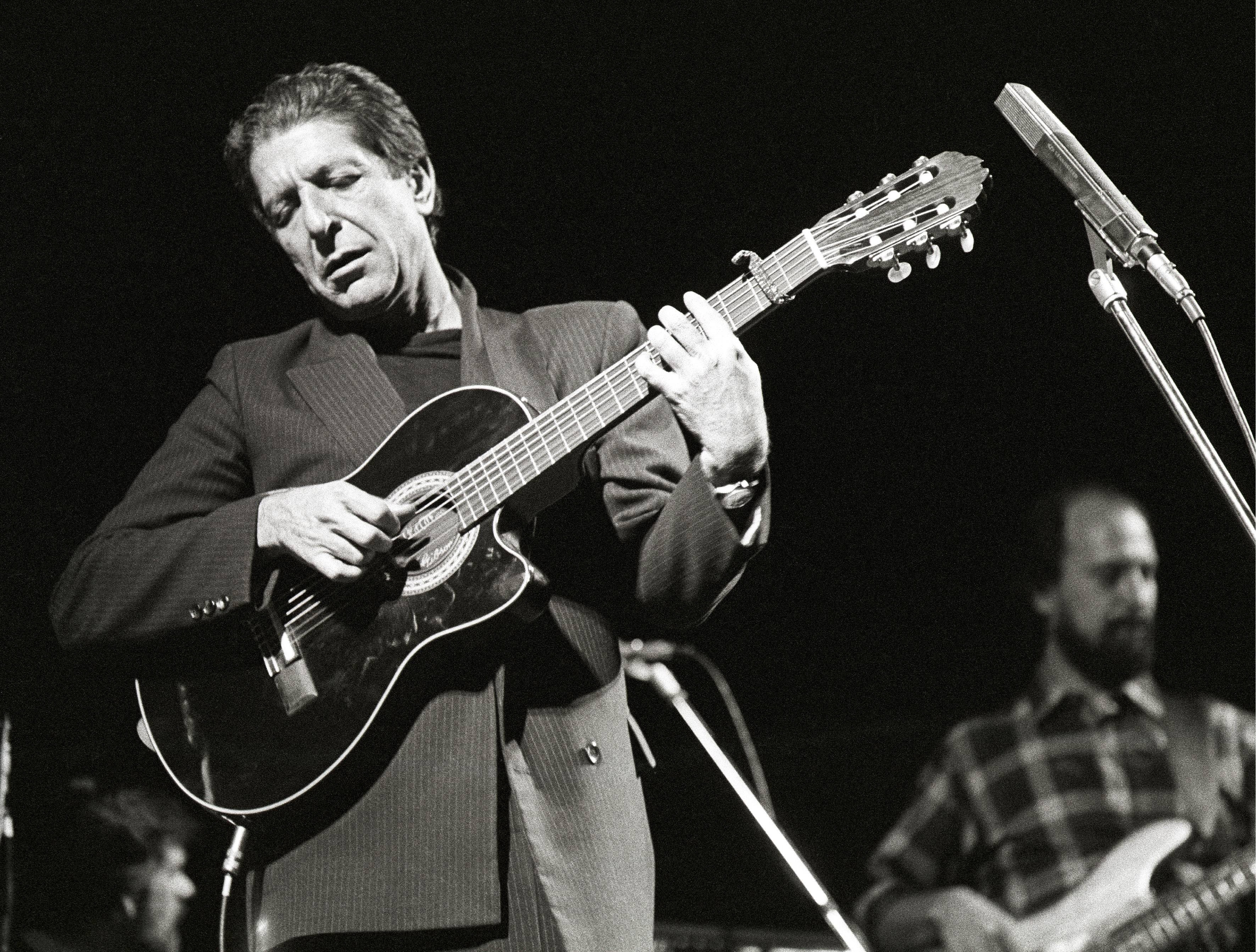 Leonard Cohen performing Suzanne, his iconic song about Suzanne Verdal, in a live concert setting.
Leonard Cohen performing Suzanne, his iconic song about Suzanne Verdal, in a live concert setting.
“Suzanne,” the opening track of Cohen’s debut album Songs of Leonard Cohen, is arguably his most recognizable and career-defining song. Often compared to a fine wine for its immaculate and enduring quality, “Suzanne” beautifully blends the sacred and the sensual. The song narrates Cohen’s real-life encounters with Suzanne Verdal, a dancer and artist, in Montreal during the summer of 1965, near the iconic St. Lawrence River. Backed by a gentle female chorus, a signature element in many Leonard Cohen songs, “Suzanne” paints a vivid picture of a bohemian romance, exploring themes of intimacy and perception. While Verdal herself noted that Cohen’s portrayal might have been sadder than her own reality, the song’s evocative lyrics and gentle melody have captivated listeners for generations, making it a cornerstone of Leonard Cohen’s songbook.
“Sisters of Mercy” (1967)
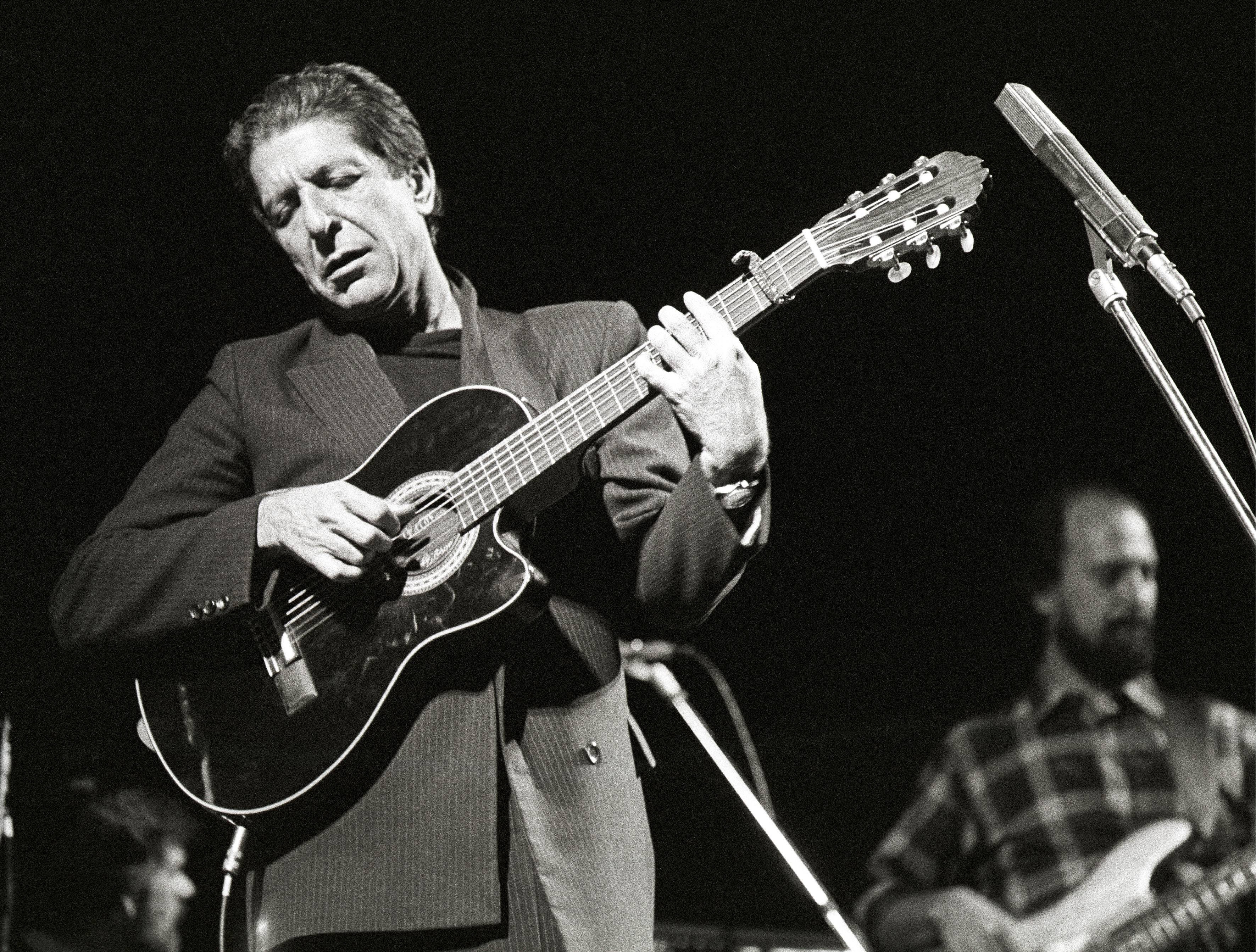 Leonard Cohen's album cover featuring "Sisters of Mercy", showcasing the poetic and introspective nature of his early work.
Leonard Cohen's album cover featuring "Sisters of Mercy", showcasing the poetic and introspective nature of his early work.
Composed during a blizzard in Edmonton, Canada, “Sisters of Mercy” is a haunting waltz that showcases Cohen’s ability to find beauty in unexpected moments. The song’s origins are rooted in a night where Cohen offered his hotel bed to two backpackers, Barbara and Lorraine. Observing them sleep, overlooking the North Saskatchewan River, the melody and lyrics flowed effortlessly. Cohen described it as a song “given to me without my having to sweat over every word,” a rare and cherished experience in his songwriting process. The lyrics transform Barbara and Lorraine into ethereal figures, “Sisters of Mercy,” who offer solace and escape from worldly burdens, including family and the complexities of the soul. The addition of calliope and bells to the arrangement enhances the song’s dreamlike and otherworldly quality, solidifying its place among the most evocative Leonard Cohen songs.
“Bird on the Wire” (1969)
 Leonard Cohen performing "Bird on the Wire", a song inspired by his time on the Greek island of Hydra, during a concert.
Leonard Cohen performing "Bird on the Wire", a song inspired by his time on the Greek island of Hydra, during a concert.
Recorded in Nashville, “Bird on the Wire” possesses a prayerful quality and a melodic kinship to Lefty Frizzell’s “Mom & Dad’s Waltz.” The song’s evocative title image stems from Cohen’s time living on the Greek island of Hydra in the early 1960s. There, birds perched on newly installed telephone wires, resembling musical notes on a staff, sparking the inspiration for this iconic track. “Bird on the Wire” has resonated deeply with fellow artists, becoming one of the most covered Leonard Cohen songs, with renditions by Willie Nelson, Johnny Cash, and Aaron Neville. Kris Kristofferson even requested its opening lines be inscribed on his tombstone, highlighting the song’s profound impact. For Cohen himself, “Bird on the Wire” held immense significance, often chosen to open his concerts, with the powerful verse where he vows to atone for his wrongdoings standing as a testament to its personal importance.
“Famous Blue Raincoat” (1971)
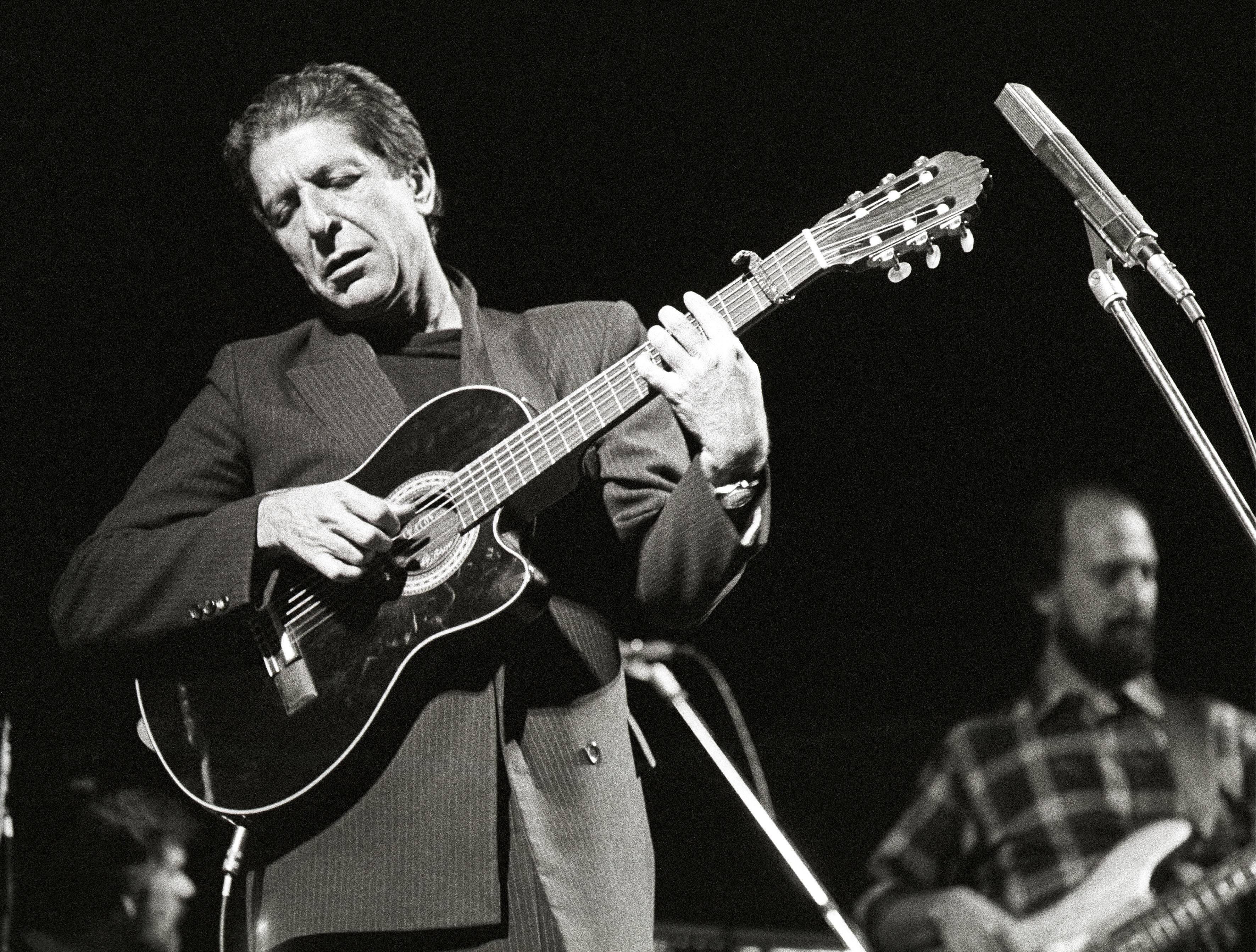 Close-up of Leonard Cohen in his famous blue raincoat, the inspiration for his enigmatic song, highlighting his personal style.
Close-up of Leonard Cohen in his famous blue raincoat, the inspiration for his enigmatic song, highlighting his personal style.
“Famous Blue Raincoat,” from the album Songs of Love and Hate, stands as one of Leonard Cohen songs that is both deeply personal and intriguingly enigmatic. Despite Cohen’s appreciation for clarity in songwriting, this track intentionally blurs the lines between autobiography and fiction. The song revolves around a romantic triangle, with Cohen addressing the “other man,” a rival for a woman’s affections. The titular “famous blue raincoat” was indeed a Burberry trench coat Cohen owned and wore for many years, adding a layer of personal detail. The lyrics hint at the rival’s involvement with Scientology, an area Cohen briefly explored, adding another layer of mystique. The song’s understated musical arrangement, featuring a subtle female chorus and ghostly strings, enhances its melancholic and reflective tone, culminating in the poignant sign-off, “Sincerely, L. Cohen,” which adds a touch of both intimacy and detachment.
“Is This What You Wanted” (1974)
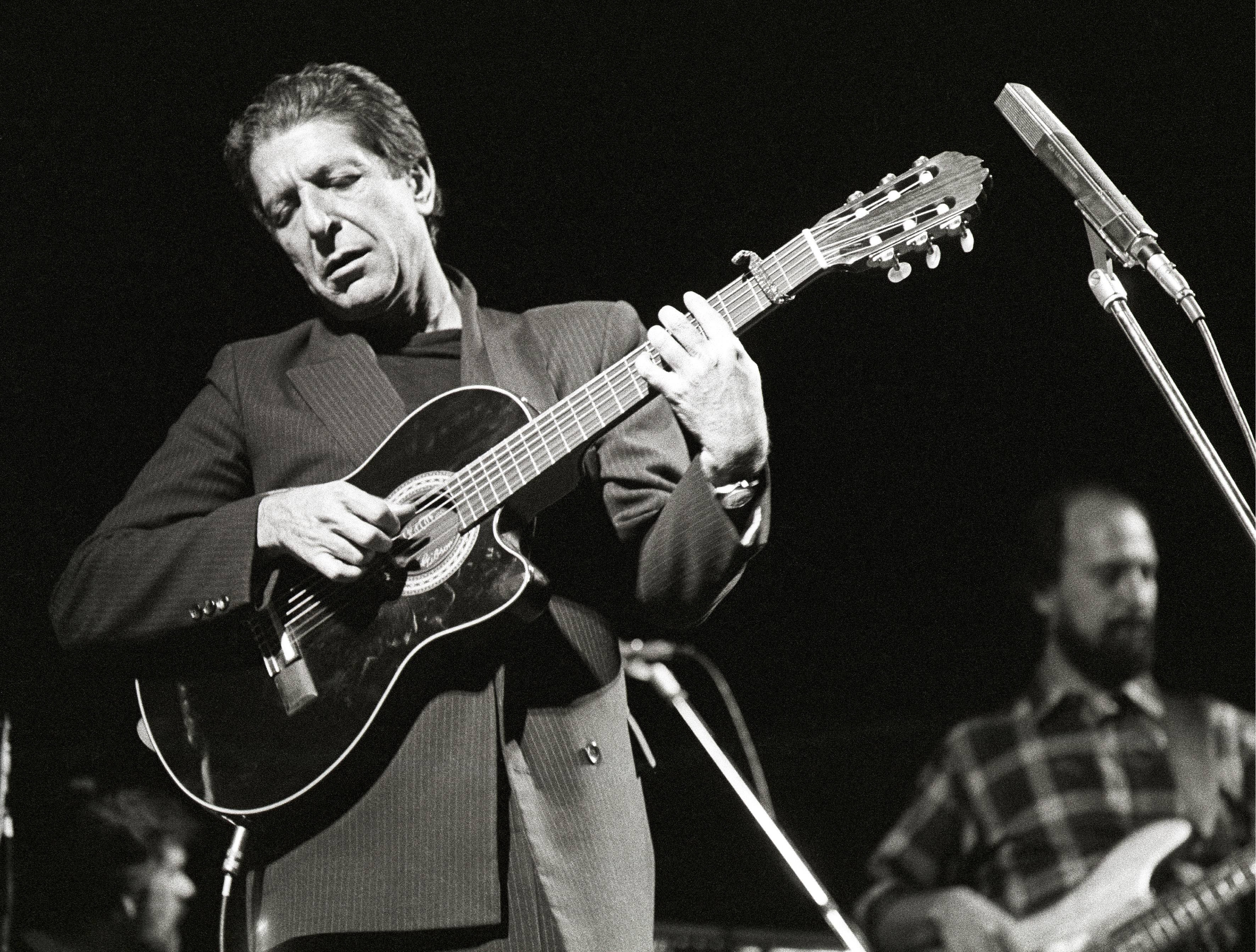 Leonard Cohen in a live performance of "Is This What You Wanted", conveying the raw emotion and theatricality of his stage presence.
Leonard Cohen in a live performance of "Is This What You Wanted", conveying the raw emotion and theatricality of his stage presence.
New Skin for the Old Ceremony, the album featuring “Is This What You Wanted,” often feels like a premonition of Cohen’s eventual separation from Suzanne Elrod, the mother of his children, in 1979. “Is This What You Wanted” is a raw and self-deprecating exploration of grievances within a strained relationship. The song’s lyrics are accusatory yet tinged with vulnerability, as Cohen compares himself unfavorably to the woman leaving him. He uses striking metaphors, casting himself as the mundane moneylender, Steve McQueen, and Rin Tin Tin, while she is elevated to Jesus, Brando, and the beast of Babylon. Musically, the song takes a refreshing turn with a music-hall-inspired energy, thanks to producer John Lissauer, and the female chorus takes on a distinctly classical Greek quality, adding to the dramatic intensity of this standout among Leonard Cohen songs.
“Chelsea Hotel #2” (1974)
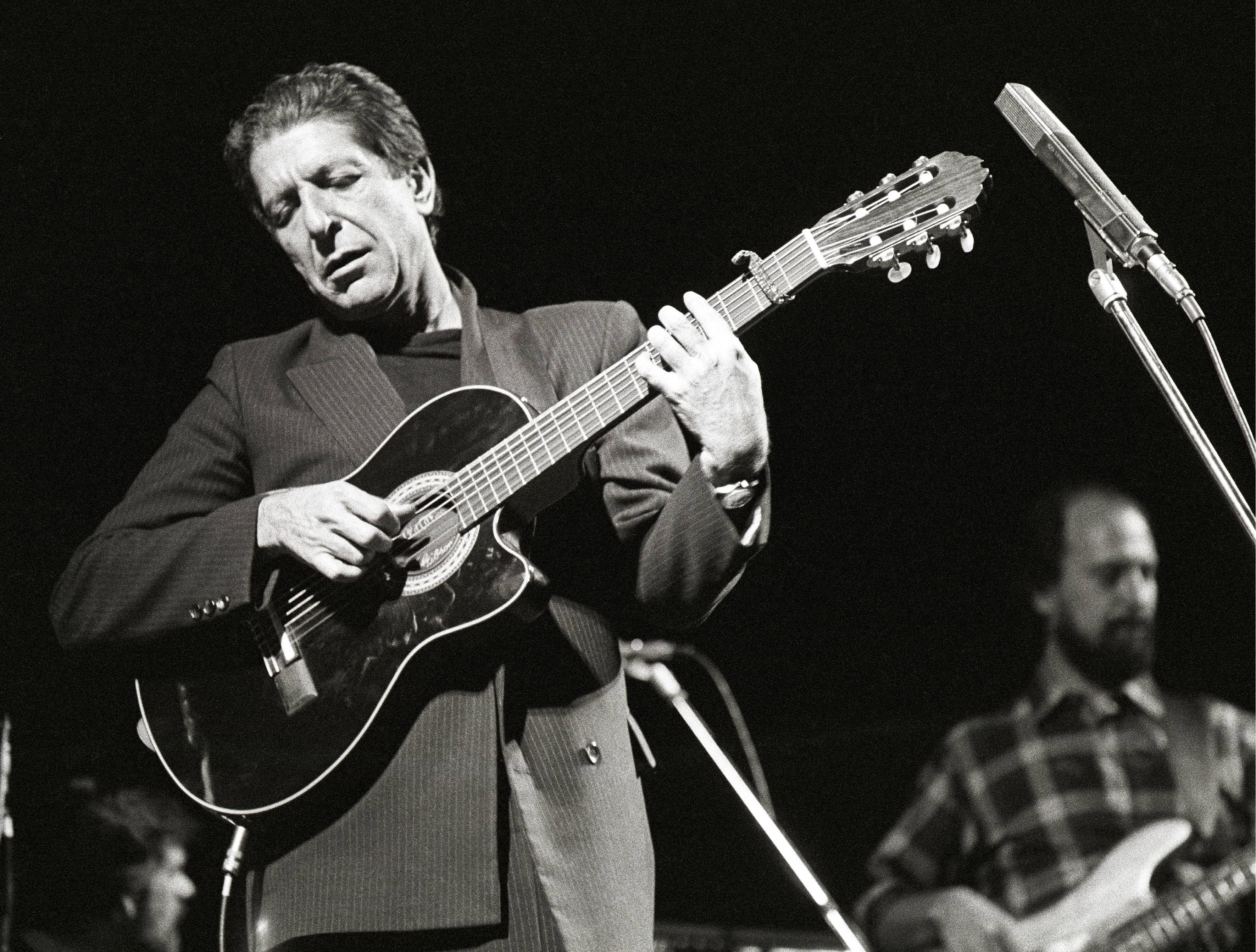 Leonard Cohen at the Chelsea Hotel, the iconic location that inspired "Chelsea Hotel #2", capturing the bohemian atmosphere.
Leonard Cohen at the Chelsea Hotel, the iconic location that inspired "Chelsea Hotel #2", capturing the bohemian atmosphere.
“Chelsea Hotel #2” offers a glimpse into a fleeting but memorable encounter with Janis Joplin at the famed Chelsea Hotel in New York City. While not as overtly romanticized as some other Leonard Cohen songs, it provides a candid snapshot of a moment shared between two iconic artists. Initially, Cohen was less direct about Joplin’s identity, but once revealed, the song’s narrative became clearer. It depicts a brief but intense connection, with lyrics describing an intimate encounter and a subsequent exchange filled with both sympathy and playful sparring. Joplin delivers a memorable line, playfully acknowledging Cohen’s preference for “handsome men” but noting her exception. Cohen later expressed regret for revealing Joplin’s identity, acknowledging the intimacy of the song’s details, but “Chelsea Hotel #2” remains a fascinating and somewhat controversial piece within his body of work.
“Lover Lover Lover” (1974)
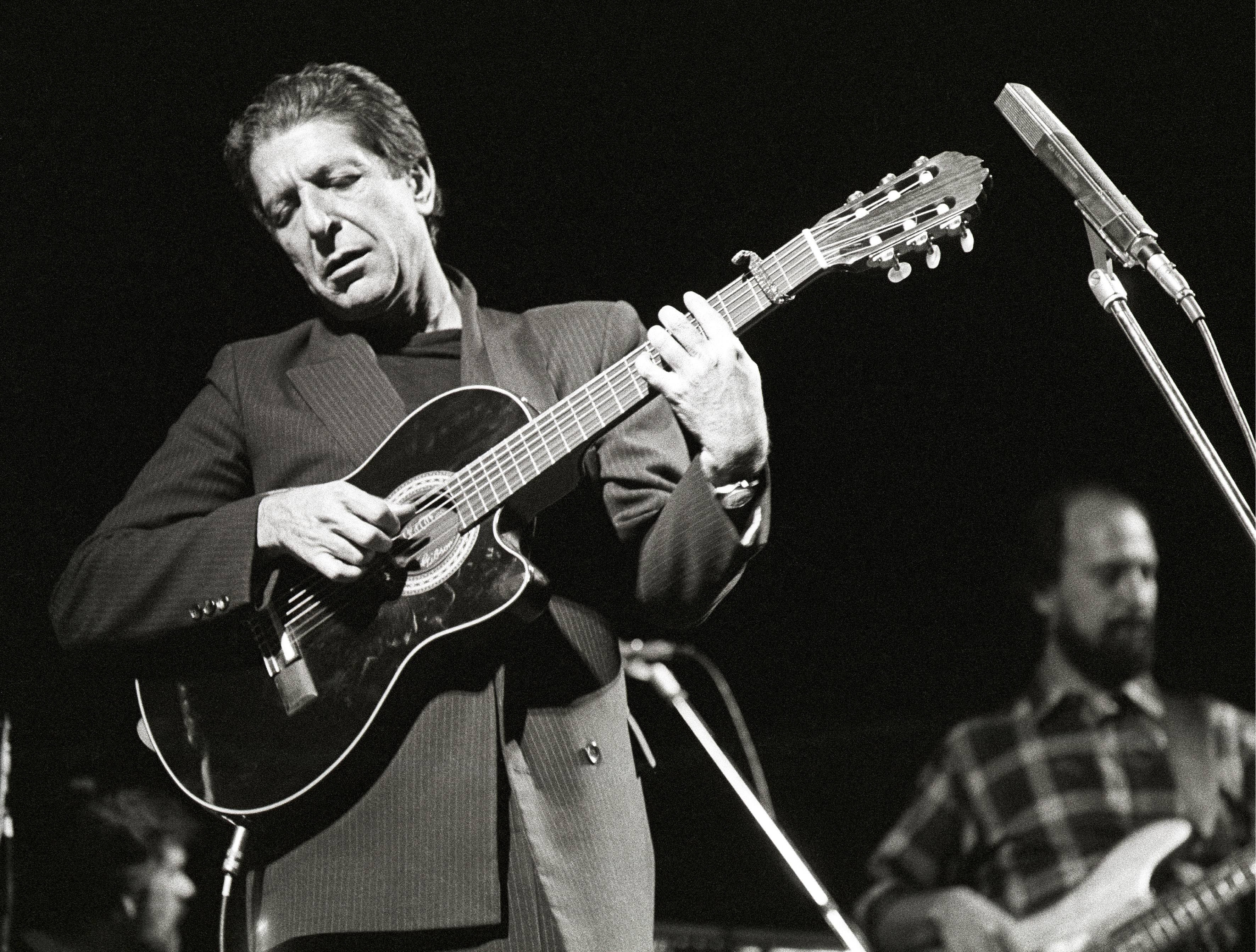 Leonard Cohen performing "Lover Lover Lover" live, showcasing the song's evolution from a war improvisation to a studio recording.
Leonard Cohen performing "Lover Lover Lover" live, showcasing the song's evolution from a war improvisation to a studio recording.
“Lover Lover Lover” has an intriguing origin, beginning as an improvisation for Israeli soldiers in the Sinai during the Yom Kippur War. This act of musical solidarity reflects Cohen’s frequent self-portrayal as a soldier, both in art and life. The song later evolved during a visit to Ethiopia, where Cohen completed a batch of unfinished songs. Initially containing a verse about “brothers fighting in the desert,” Cohen ultimately shifted the focus to a more universal and almost biblical dialogue between father and son. The lyrics explore themes of creation, purpose, and the duality of human nature, suggesting that the body itself can be both a weapon and a source of joy. This transformation from a war-inspired improvisation to a deeply philosophical reflection highlights the versatility and depth found within Leonard Cohen songs.
“Who By Fire” (1974)
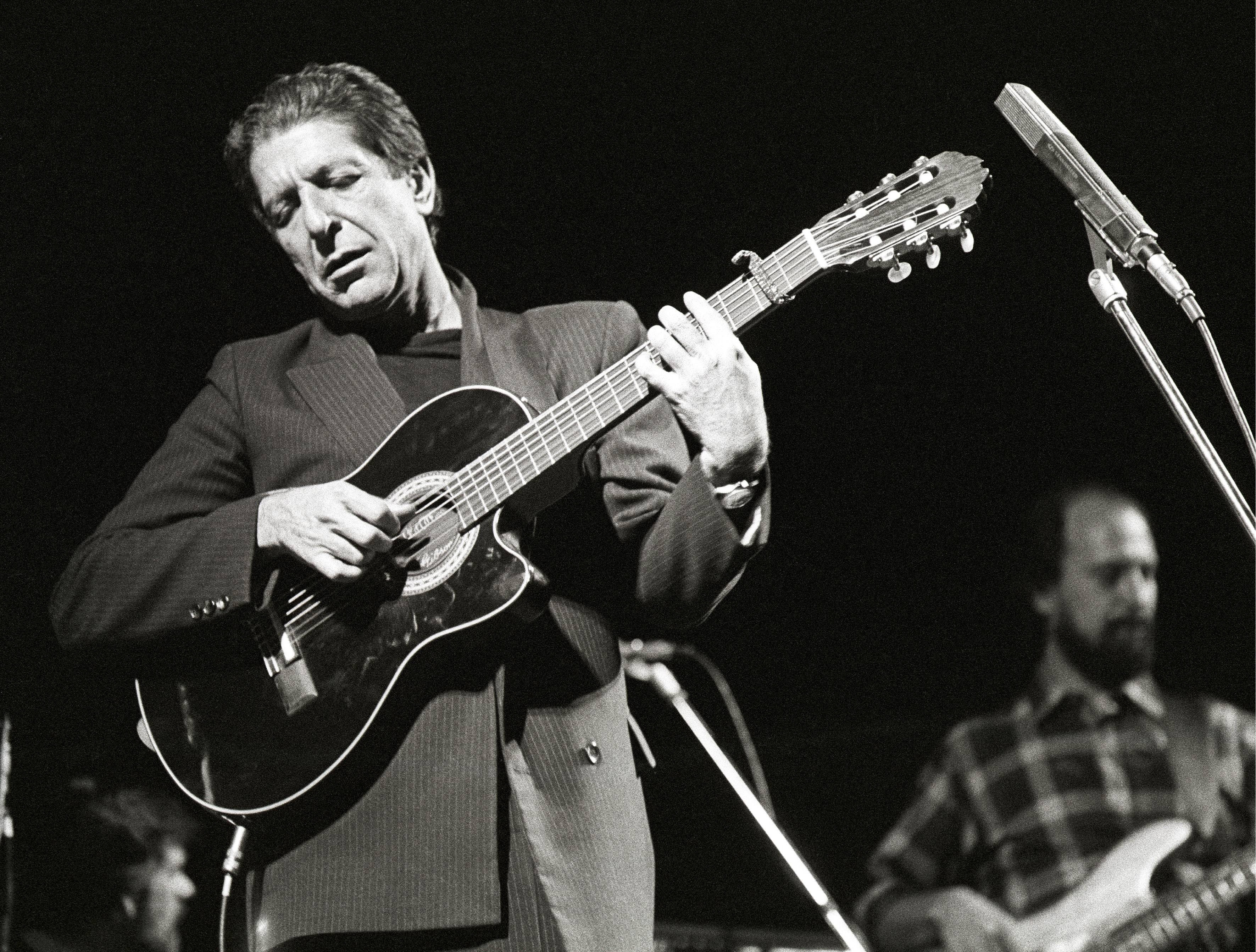 Leonard Cohen and Janis Ian performing "Who By Fire" together, a duet based on a Hebrew prayer, highlighting the song's solemn nature.
Leonard Cohen and Janis Ian performing "Who By Fire" together, a duet based on a Hebrew prayer, highlighting the song's solemn nature.
“Who By Fire,” a centerpiece of New Skin for the Old Ceremony, is a solemn and intensely spiritual song. Its melody is directly inspired by “Unetanneh Tokef,” a central Hebrew prayer chanted on Yom Kippur, the Day of Atonement, which contemplates mortality and destiny. In this powerful duet with folk singer Janis Ian, Cohen creates his own modern litany of death, listing various ways one might “leave this vale of tears,” ranging from mundane causes like “downers” to dramatic events like “avalanche” or “something blunt.” Each verse concludes with the agnostic and haunting question, “and who shall I say is calling?” Onstage, Cohen often encouraged his musicians to improvise Middle Eastern maqams around “Who By Fire,” further emphasizing its somber and reflective nature, making it a profoundly moving entry in the catalogue of Leonard Cohen songs.
“Memories” (1977)
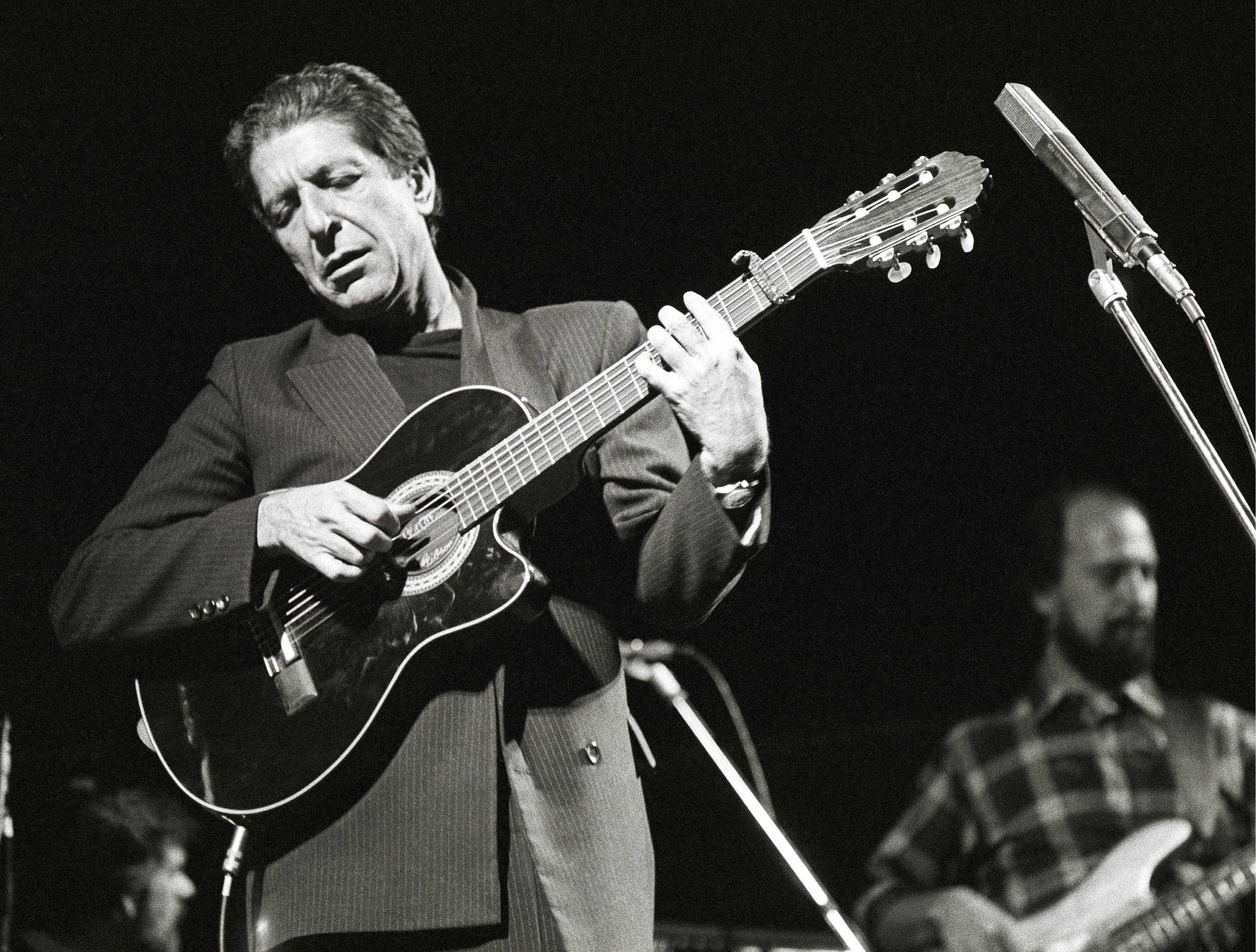 Leonard Cohen and Phil Spector during the recording sessions for "Death of a Ladies' Man", showcasing the tumultuous creative process behind "Memories".
Leonard Cohen and Phil Spector during the recording sessions for "Death of a Ladies' Man", showcasing the tumultuous creative process behind "Memories".
“Memories” emerges from the chaotic and often volatile collaboration between Cohen and producer Phil Spector on the album Death of a Ladies’ Man. This track is a deliberately over-the-top, “Wall of Sound” influenced piece that blends Cohen’s adolescent sexual anxieties with his unrequited infatuation with the statuesque German singer Nico. “Memories” playfully borrows from the Shields’ 1958 doo-wop hit “You Cheated, You Lied,” quoting it in the outro. Cohen himself wryly introduced “Memories” onstage as a “vulgar ditty… in which I have placed my most irrelevant and banal adolescent recollections.” Despite its self-deprecating description, the song’s uncharacteristic exuberance and Spector’s grandiose production create a strangely glorious and memorable moment among Leonard Cohen songs.
“The Guests” (1979)
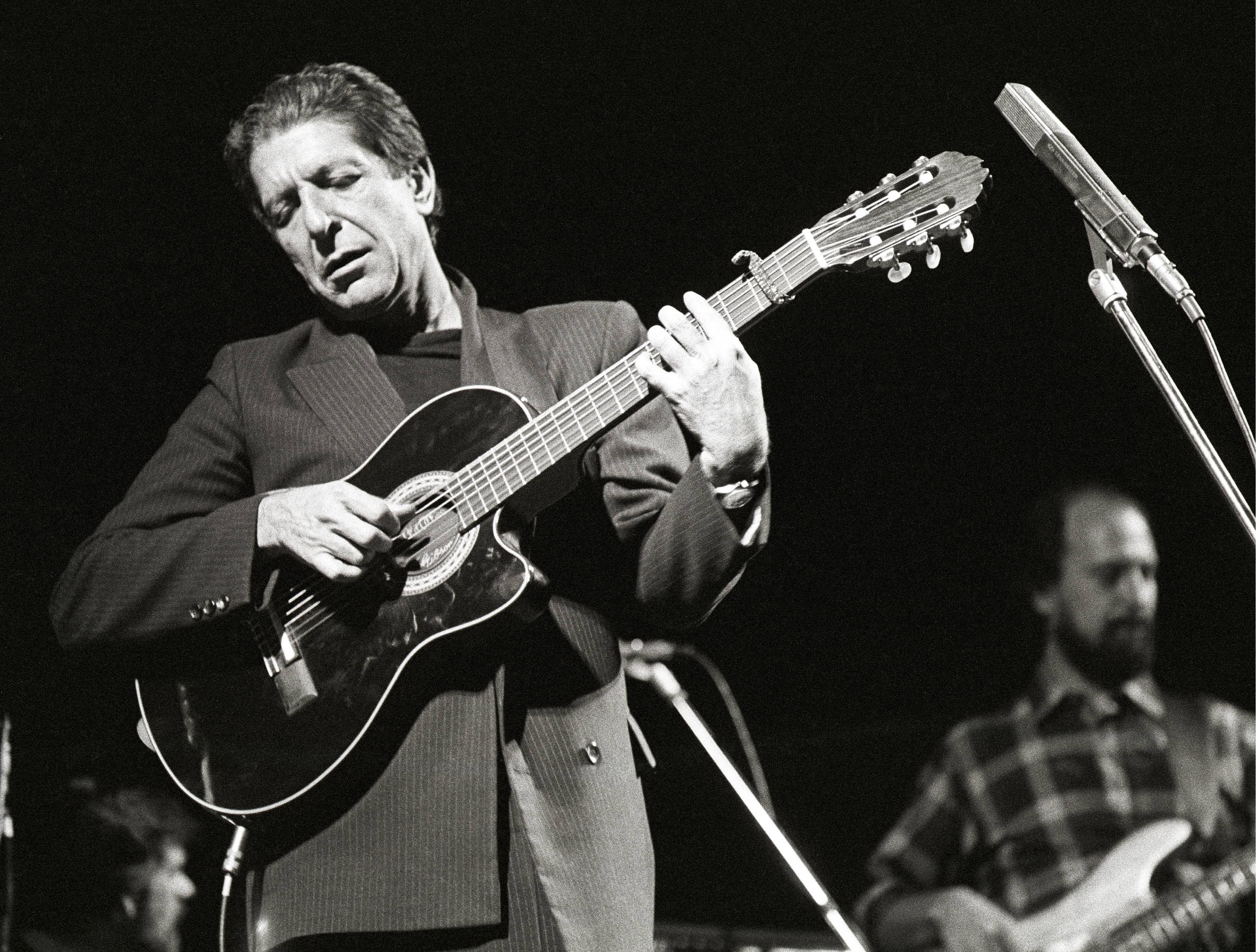 Leonard Cohen in a contemplative pose, reflecting the spiritual and introspective themes of "The Guests" and his album "Recent Songs".
Leonard Cohen in a contemplative pose, reflecting the spiritual and introspective themes of "The Guests" and his album "Recent Songs".
Following the baroque excesses of Death of a Ladies’ Man, Recent Songs marked a return to Cohen’s acoustic folk roots. “The Guests,” inspired by the 14th-century Sufi poet Rumi, carries a distinct Middle Eastern flavor and marks the first collaboration between Cohen and Jennifer Warnes, who would become a frequent and beloved vocal partner. The song exists in a space between a celebration of life’s rich tapestry and a subtle nod to Poe’s macabre “Masque of the Red Death.” “The Guests” offers a glimpse into Cohen’s complex spiritual ambivalence. It acknowledges the world’s inherent coldness and loneliness, yet suggests that through deep striving and grace, “the inner door flies open” and “the soul finds himself at that banquet table,” as Cohen explained to filmmaker Harry Rasky. This duality makes “The Guests” a compelling and thought-provoking piece amongst Leonard Cohen songs.
“Hallelujah” (1984)
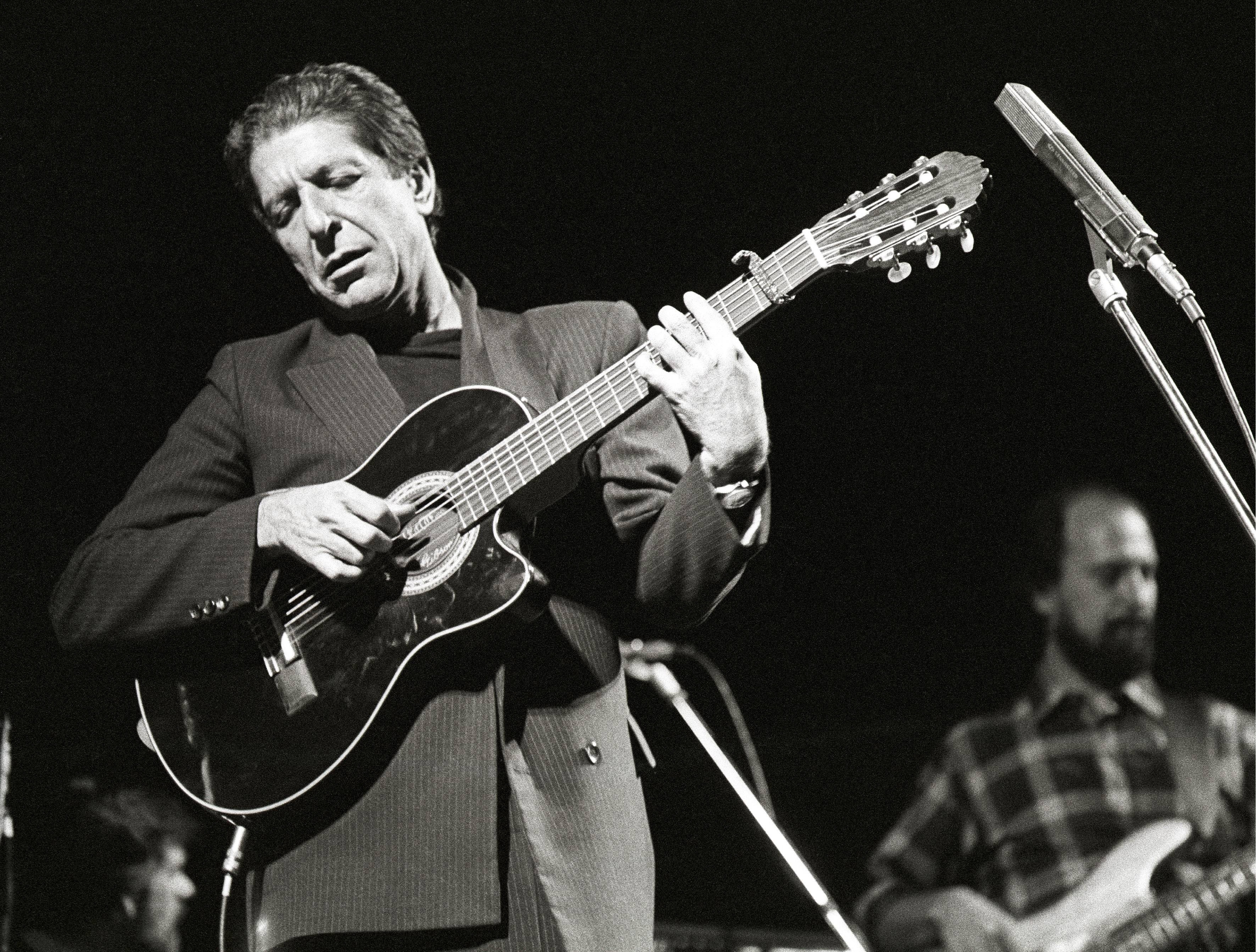 Leonard Cohen singing "Hallelujah", his most famous and covered song, with deep emotion and spiritual intensity.
Leonard Cohen singing "Hallelujah", his most famous and covered song, with deep emotion and spiritual intensity.
Five years after Recent Songs, a 50-year-old Leonard Cohen released Various Positions, an album containing what would become his most covered and arguably most famous song: “Hallelujah.” Ironically, the song initially failed to impress CBS president Walter Yetnikoff, who deemed the album unmarketable and a “disaster.” Despite this initial rejection, “Hallelujah” resonated deeply with other artists and audiences. Cohen himself considered it “rather joyous,” a sentiment echoed by Bob Dylan, who performed it live in 1988. Jeff Buckley’s 1994 rendition catapulted the song to widespread fame. Producer John Lissauer described the recording process as effortless, stating, “It almost recorded itself. The great records usually do.” “Hallelujah” has since become a modern standard, performed in countless contexts and cementing its place as the quintessential Leonard Cohen song for many.
“First We Take Manhattan” (1988)
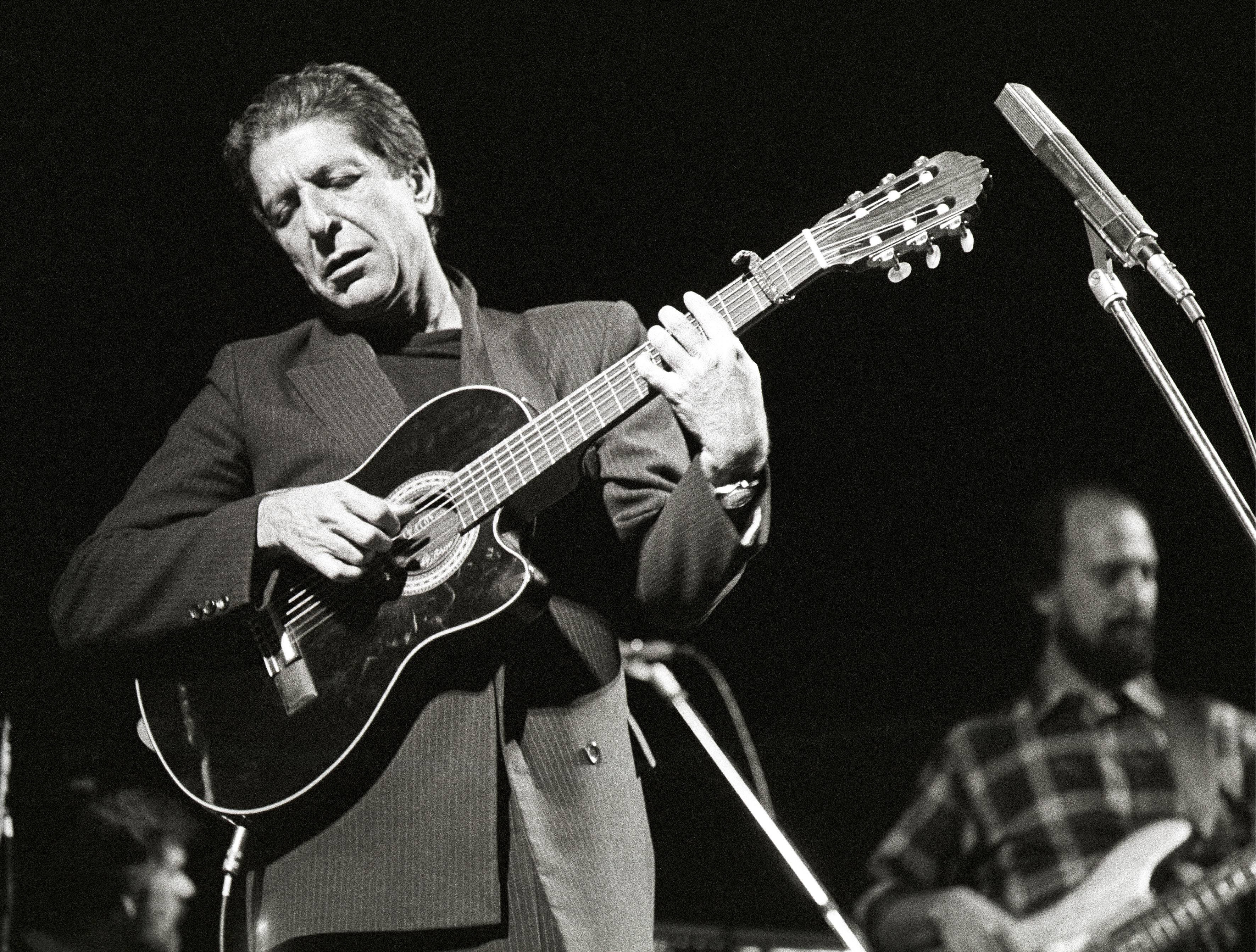 Leonard Cohen during his "I'm Your Man" era, embracing synthesizers and a new musical direction, as seen in "First We Take Manhattan".
Leonard Cohen during his "I'm Your Man" era, embracing synthesizers and a new musical direction, as seen in "First We Take Manhattan".
I’m Your Man marked a significant artistic reboot for Cohen, embracing low-budget synthesizers and a more contemporary sound. “First We Take Manhattan,” the album’s opening track, exemplifies this shift. Driven by a spare Eurodisco beat, a stark contrast to his previous acoustic albums, the song unfolds as a fantasy of global musical domination. Originally titled “In Old Berlin,” it carries a prophetic undercurrent of impending darkness. Cohen described the singer’s voice as “enlightened bitterness,” delivering a “demented, menacing, geopolitical manifesto” inviting kindred spirits to join in a world takeover. This unexpected blend of dark humor, electronic instrumentation, and apocalyptic themes makes “First We Take Manhattan” a standout and intriguing example of Leonard Cohen songs from this period.
“I’m Your Man” (1988)
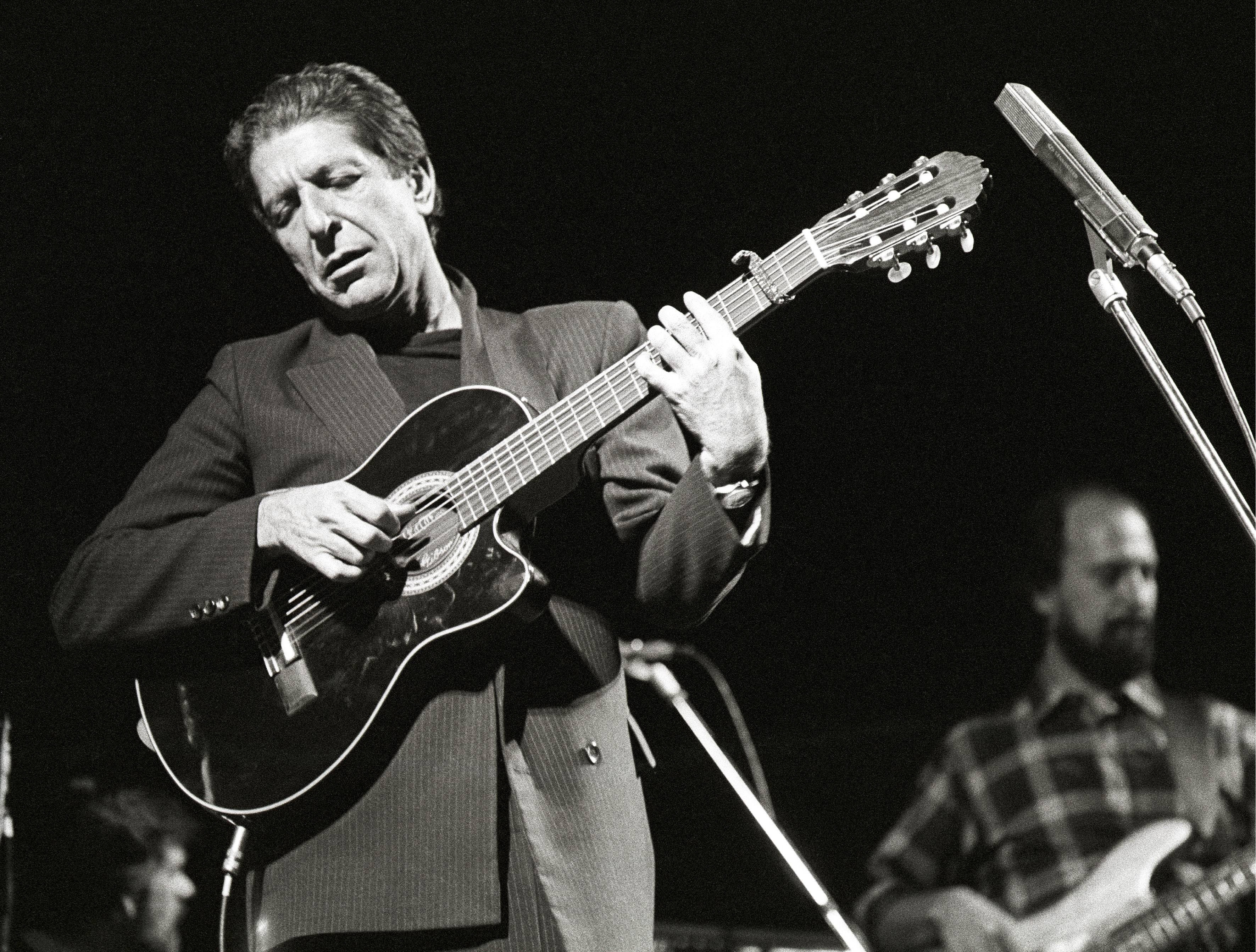 Leonard Cohen performing "I'm Your Man", the title track of his comeback album, with intensity and vocal authority.
Leonard Cohen performing "I'm Your Man", the title track of his comeback album, with intensity and vocal authority.
“I’m Your Man,” the overtly carnal title track of his “comeback” album, was a song Cohen admitted to laboring over. He felt that on I’m Your Man, his voice had matured and settled, allowing him to deliver songs with newfound authority and intensity. Set against a backdrop of a cheesy drum-machine beat and sotto voce horn riffs, with hints of a country ballad, Cohen conversationally offers himself to a woman he has wronged. While stopping short of outright begging for forgiveness, the lyrics convey a powerful sense of vulnerability and devotion, famously declaring, “I’d crawl to you baby and I’d fall at your feet/And I’d howl at your beauty like a dog in heat…” This raw emotional honesty and directness are hallmarks of many impactful Leonard Cohen songs.
“Everybody Knows” (1988)
 Leonard Cohen and Jennifer Warnes performing "Everybody Knows" together, highlighting their vocal partnership and the song's themes of shared knowledge and societal truths.
Leonard Cohen and Jennifer Warnes performing "Everybody Knows" together, highlighting their vocal partnership and the song's themes of shared knowledge and societal truths.
I’m Your Man‘s apocalyptic yet darkly comedic tone continues with “Everybody Knows,” a classic Leonard Cohen song built around a list-like structure. Cohen’s voice is deeper and more sardonic than ever, complemented by Jennifer Warnes’ angelic backing vocals. The lyrics present a series of widely accepted truths about sex, politics, and societal issues like the AIDS crisis, only to subtly subvert them. Co-writer Sharon Robinson explained the song’s underlying message: “It says we’re not really in control of our destiny. [T]here are others running things, and we go about our daily lives with that in the background.” The song’s contrasting elements – synthesizers, a disco bass line, Cohen’s organic vocal delivery, and an old-world oud solo – create a unique and compelling sonic landscape.
“The Future” (1992)
 Leonard Cohen performing "The Future", a song inspired by the fall of the Berlin Wall, with a gospel choir, emphasizing its apocalyptic and powerful nature.
Leonard Cohen performing "The Future", a song inspired by the fall of the Berlin Wall, with a gospel choir, emphasizing its apocalyptic and powerful nature.
The fall of the Berlin Wall served as a major inspiration for The Future album, particularly its gloomy yet thrilling title track. “The Future” is a stark and unflinching commentary on societal decay and impending doom, famously declaring, “Give me back the Berlin Wall/Give me Stalin and St. Paul/I’ve seen the future, brother: It is murder.” A gospel chorus punctuates this rock-infused track, reminiscent of Dylan’s more apocalyptic works. Cohen, influenced by the decaying atmosphere of Los Angeles, expresses both revulsion at the present and pessimism about the future. He described the song’s themes with characteristic dark humor, stating, “This is kindergarten stuff compared to the homicidal impulse that is developing in every breast!” This unflinching look at the world makes “The Future” a powerful and unsettling entry among Leonard Cohen songs.
“Waiting for the Miracle” (1992)
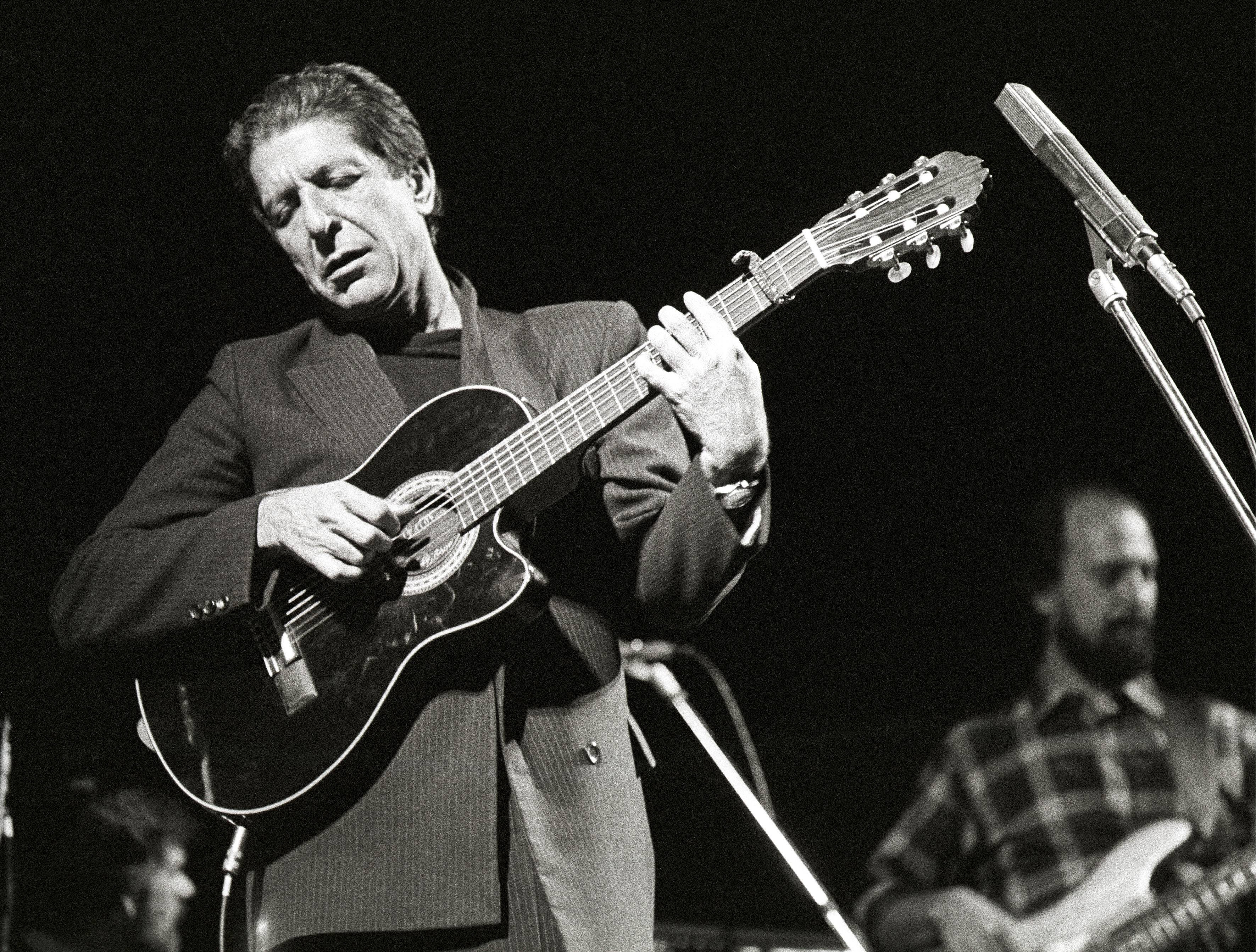 Leonard Cohen in a melancholic mood, reflecting the desolate and introspective atmosphere of "Waiting for the Miracle" and the "The Future" album.
Leonard Cohen in a melancholic mood, reflecting the desolate and introspective atmosphere of "Waiting for the Miracle" and the "The Future" album.
In “Waiting for the Miracle,” Cohen’s vocal delivery evokes Serge Gainsbourg at his most melancholic. A recurring low whistle sets a desolate, spaghetti Western-like tone. Through increasingly despondent verses, Cohen maps the “interior catastrophe” that he stated informed The Future album. Despite the bleak subject matter, he described the songs as “treated vigorously, and if I may say so, cheerfully.” The penultimate verse contains a line that some interpreted as a marriage proposal to his then-girlfriend Rebecca De Mornay, though their relationship ended shortly after the album’s release. Cohen himself described “the miracle” as moving “to the other side of the miracle where you cop to the fact that you’re waiting for it and that it may or may not come,” capturing a sense of resigned hope and acceptance within this poignant Leonard Cohen song.
“Anthem” (1992)
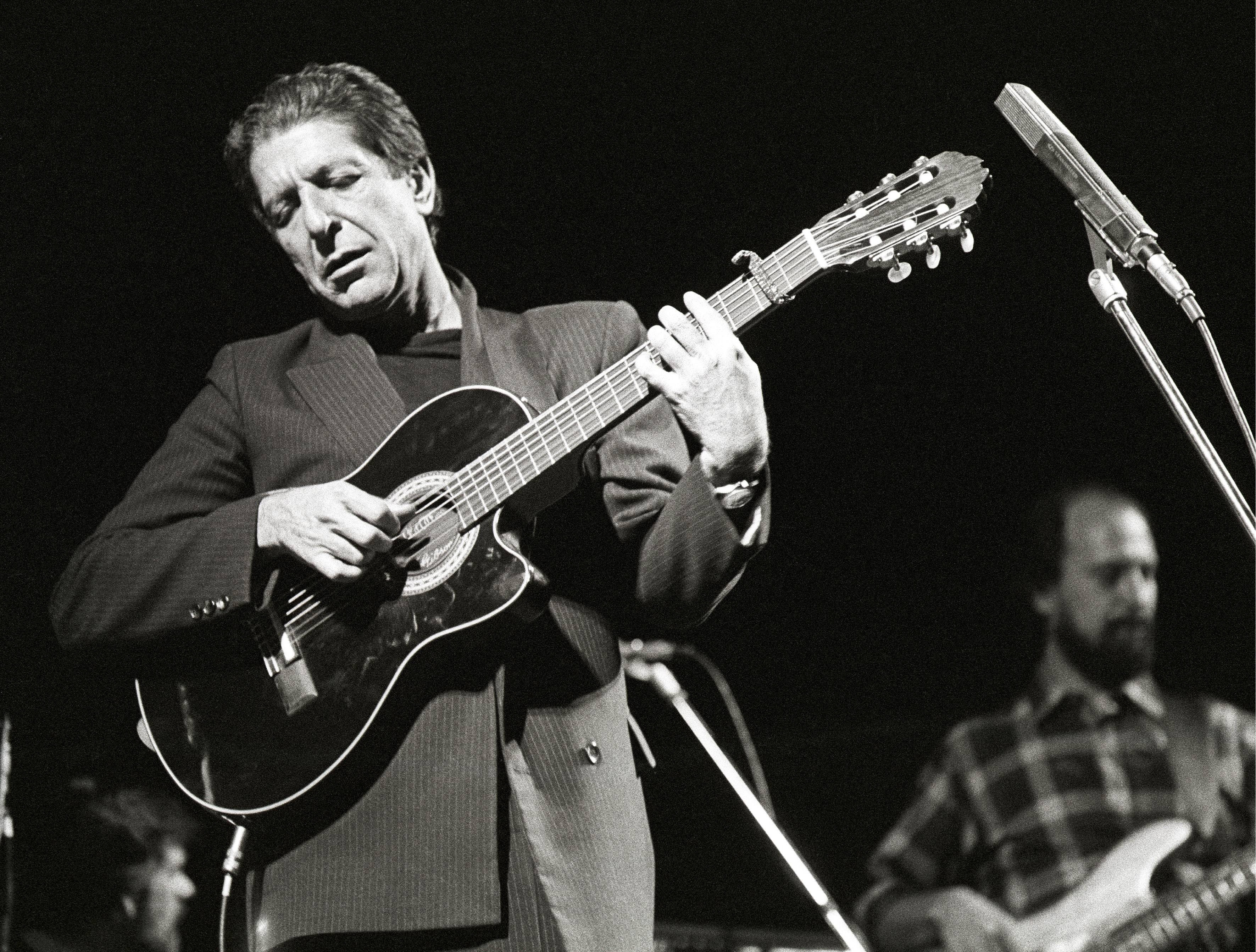 Leonard Cohen performing "Anthem", considered the pinnacle of his understanding of human defeat and resilience, with a gospel choir.
Leonard Cohen performing "Anthem", considered the pinnacle of his understanding of human defeat and resilience, with a gospel choir.
Rebecca De Mornay, who received a production credit for suggesting the gospel choir in “Anthem,” considered it “the pinnacle of his deep understanding of human defeat.” “Anthem,” the centerpiece of The Future, is a majestic ode to decay and rebirth, with roots stretching back to a song fragment from a decade earlier titled “Ring the Bells.” Its Kabbalistic influences reach even further back to the 16th century. The song’s unforgettable chorus, “There is a crack, a crack in everything/That’s how the light gets in,” is a powerful statement of hope amidst imperfection. Cohen claimed these lines were “very old… I’ve been recycling them in many songs. I must not be able to nail it,” highlighting his ongoing artistic refinement of these profound ideas, making “Anthem” a truly enduring Leonard Cohen song.
“A Thousand Kisses Deep” (2001)
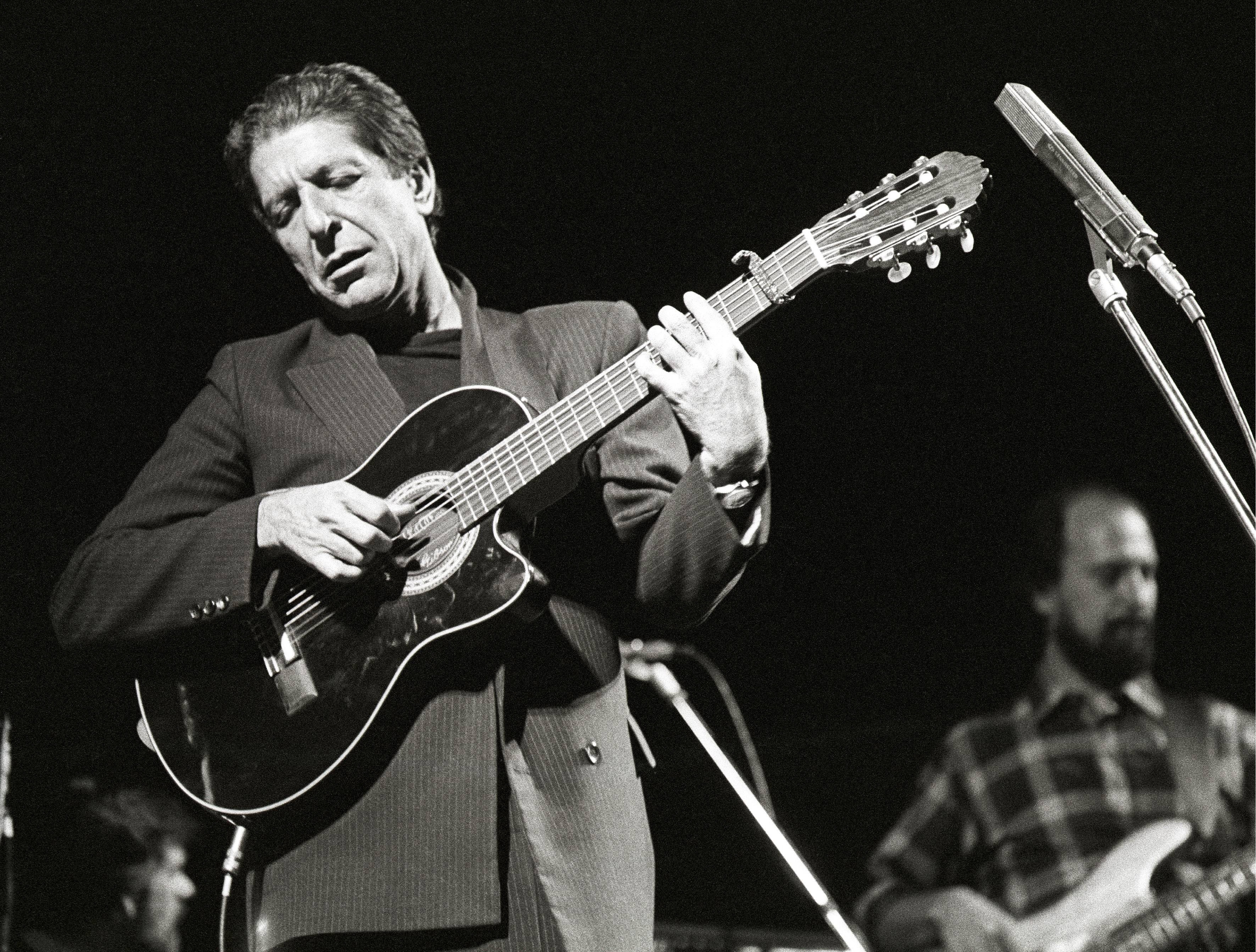 Leonard Cohen in a Zen-like pose, reflecting his time at the Mount Baldy Zen Center and the contemplative nature of "A Thousand Kisses Deep".
Leonard Cohen in a Zen-like pose, reflecting his time at the Mount Baldy Zen Center and the contemplative nature of "A Thousand Kisses Deep".
Leonard Cohen’s lyrics took on an even more profound, koan-like quality after his five-year retreat at the Mt. Baldy Zen Center between The Future and 2001’s Ten New Songs. “A Thousand Kisses Deep” embodies this new depth and introspective focus. Co-writer/producer Sharon Robinson described the album as “some kind of extension of his time at Mount Baldy. He was still very reclusive during this time.” Recorded largely in Robinson’s garage studio and Cohen’s home studio, the song evokes the feel of an ancient folk ballad. Its atmosphere of desolation and profound loneliness creates an exceptionally intimate listening experience, showcasing the evolved spiritual and lyrical landscape of Leonard Cohen songs in his later period.
“Going Home” (2012)
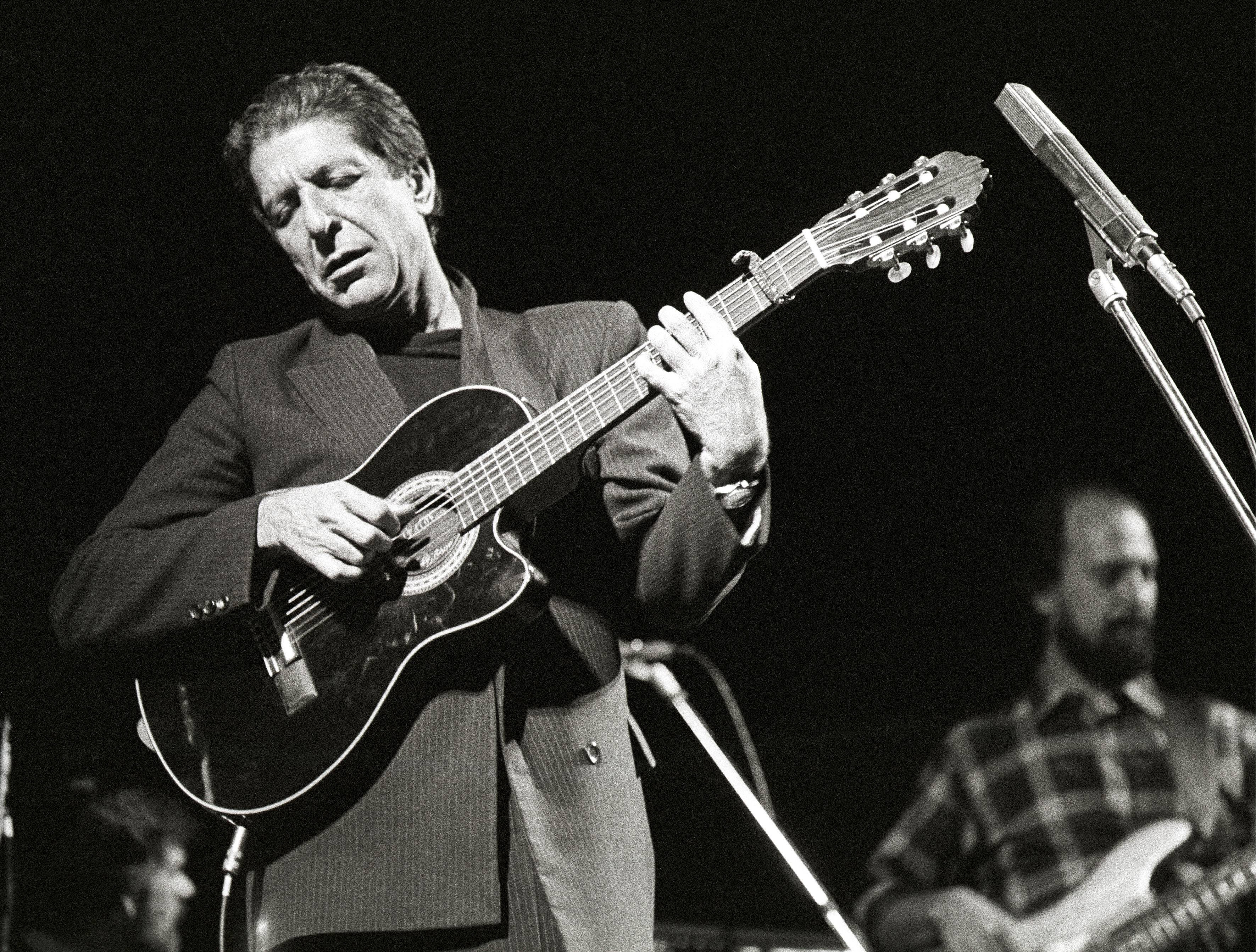 Leonard Cohen during his rejuvenated touring period, performing "Going Home", a meta-song reflecting on his persona and artistic journey.
Leonard Cohen during his rejuvenated touring period, performing "Going Home", a meta-song reflecting on his persona and artistic journey.
Reinvigorated by a two-year tour starting in 2008 at the age of 73, Cohen returned to the studio to create Old Ideas. “Going Home,” the album’s opening track, is remarkably meta-textual. Cohen’s persona, or perhaps his transcendental self, describes “Leonard” as a “lazy bastard living in a suit.” Despite the impact of years of smoking on his voice, Cohen’s self-examination in this song offers a poignant example of self-forgiveness and acceptance as he contemplates mortality. Initially, Cohen was unsure of the song’s potential, but producer Pat Leonard recognized its strength, leading to its inclusion on the album and its status as a reflective and insightful late-career Leonard Cohen song.
“You Want it Darker” (2016)
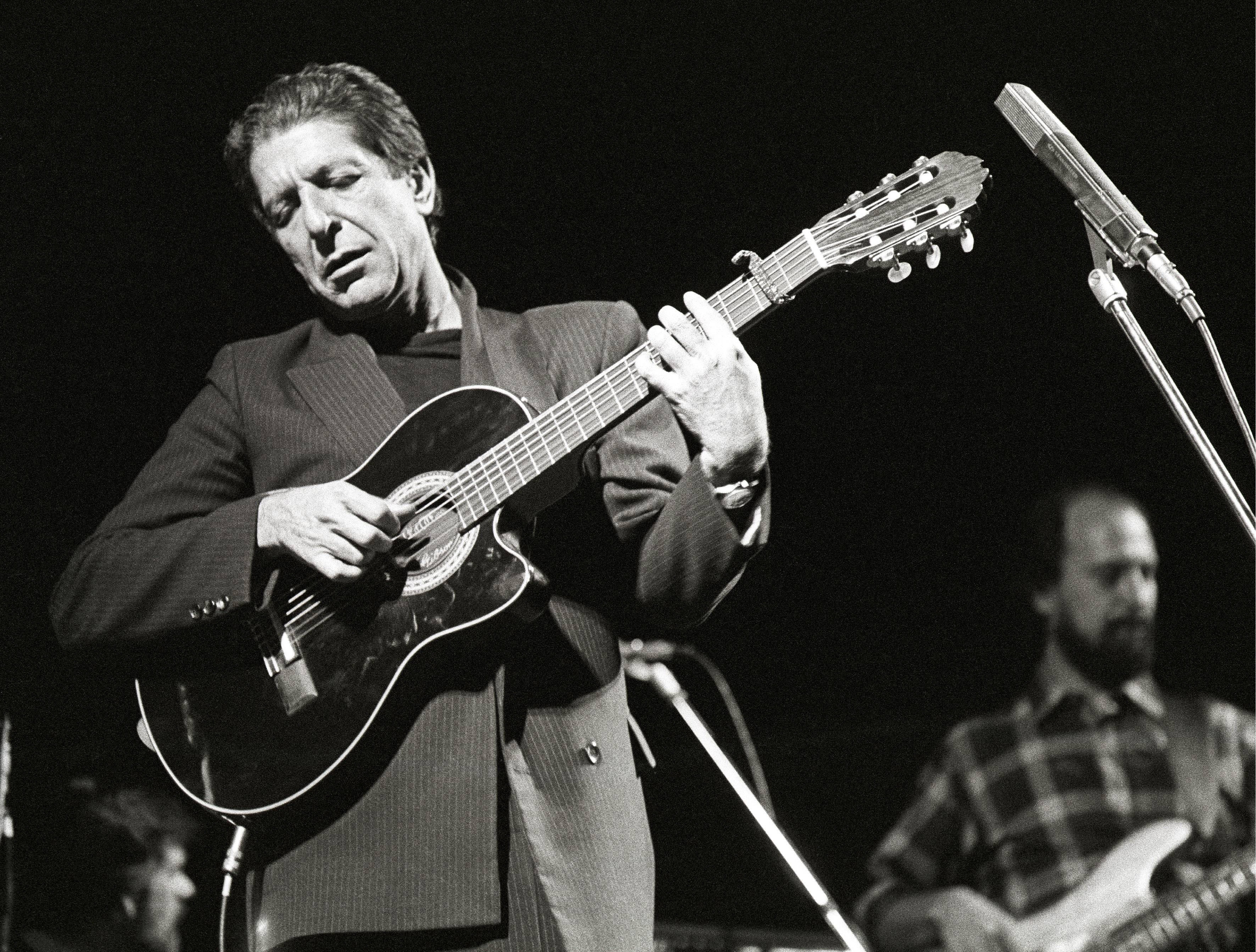 Leonard Cohen in his later years, during the recording of "You Want It Darker", a poignant farewell album produced by his son, Adam Cohen.
Leonard Cohen in his later years, during the recording of "You Want It Darker", a poignant farewell album produced by his son, Adam Cohen.
Cohen’s long and impactful career concluded with You Want It Darker, his 14th and final studio album, produced by his son, Adam Cohen. The title track, “You Want It Darker,” is a sparsely arranged and deeply moving farewell. A male cantorial chorus replaces the female backing vocalists of his earlier work, intoning a haunting countermelody to Cohen’s signature baritone growl. Like much profound devotional music, the lyrics can be interpreted as addressed to a deity, a lover, or even his devoted fans. It’s a song that embodies hope and despair, bitterness and sweetness, piety and profanity, all intertwined. “Hineni, hineni” – Hebrew for “Here I am” – Cohen declares between verses, “I’m ready my Lord.” As he told The New Yorker upon its release, “I am ready to die. I hope it’s not too uncomfortable.” “You Want It Darker” stands as a powerful and fitting final statement in the extraordinary collection of Leonard Cohen songs.
These essential Leonard Cohen songs represent just a glimpse into the vast and richly textured world of his music. From his early folk ballads to his later, more electronically infused and spiritually probing works, Leonard Cohen consistently delivered songs that were both deeply personal and universally resonant. His lyrics, often described as poetry set to music, continue to inspire and challenge listeners, ensuring his legacy as one of the most important songwriters of the 20th and 21st centuries.
